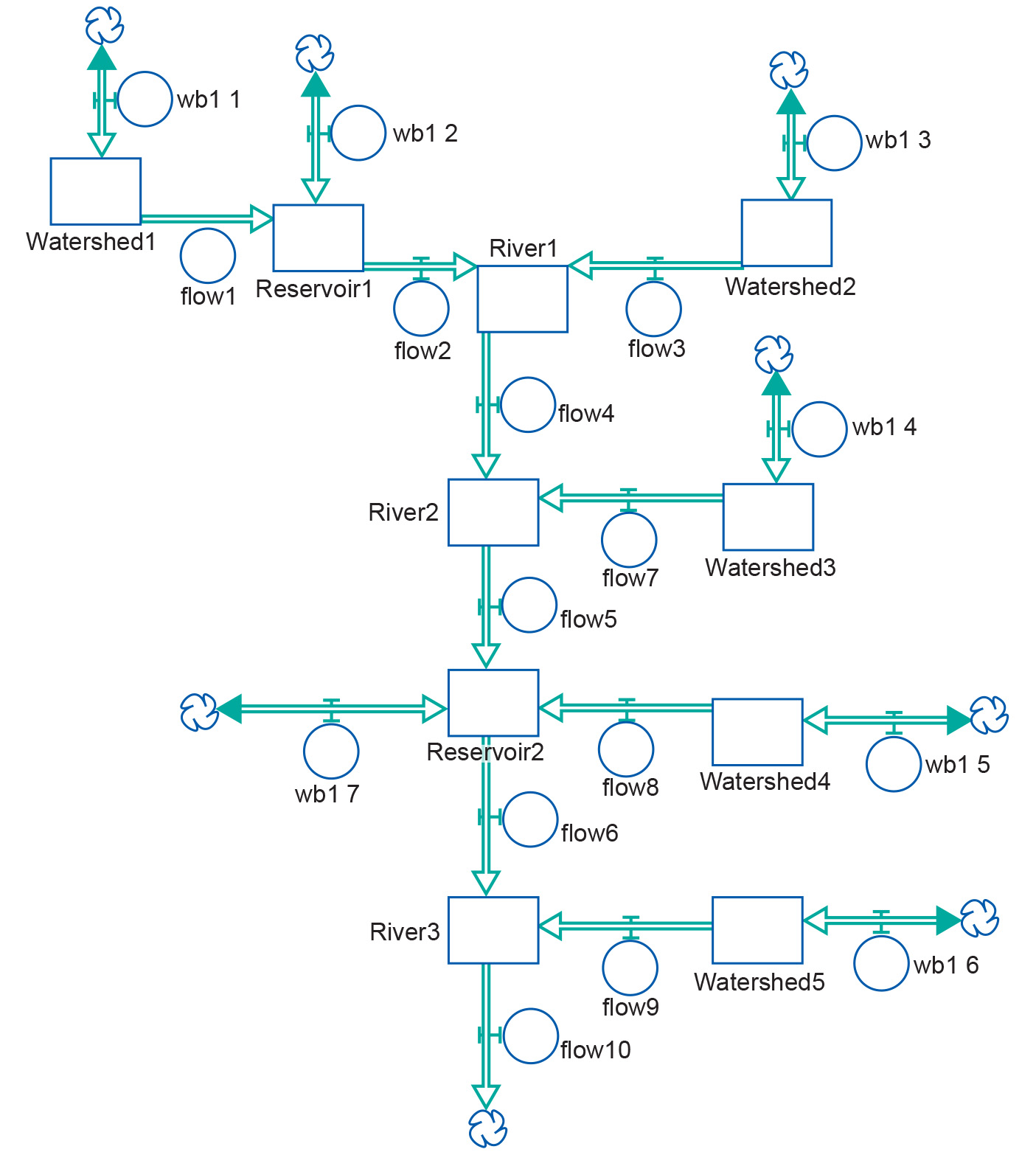System Dynamics
Introduction
The main assumption in such models is that systems can be represented as a collection of stocks connected by flows, so material or energy accumulates in stocks and moves between them through flows.
Stella was one of the first software packages that captured worldwide recognition due to a very nice graphic user-friendly interface (GUI) and a fairly wise marketing program that particularly targeted students and university professors. A number of other software packages followed that are superior to Stella in many aspects. Other packages in this category are: Vensim, Powersim, Madonna, Simile and others. An expanded version of these are extendable tools, such as Extend, GoldSim, Simulink, and others. This software has many more icons than the stocks, flows and parameter operations of the basic Systems Dynamics tools. Whole sub-models or solvers for mathematical equations, such as partial differential equations, may be embedded into specially designed icons that later on become part of the toolbox for future applications.
Clearly a major advantage is that modelling systems can be extended to include almost any process. However there are always limitations. A major one is that, systems dynamics tools in most cases are not well suited for spatially explicit formalization. Simile is probably the only one of those mentioned above that can handle maps and spatial transport well. Alternatively, Stella local models can be embedded in more sophisticated software tools such as SME (Gaddis, Falk, Ginger & Voinov (2010)).
More recently a translator was built to convert Stella equations into R script, making them available for further analysis and runs within the powerful open source R package (Naimi & Voinov (2012)). One generic problem is that the more the power built into these systems, the more difficult they are to learn and to use.
Examples

External resources
- Gaddis, E. et al. (2010). Effectiveness of a participatory modelling effort to identify and advance community water resource goals in St.Albans, Vermont. Environmental Modelling & Software, 25,1428–1438. doi: 10.1016/j.envsoft.2009.06.004.
- Naimi, B. & Voinov, A. (2012). StellaR: A software to translate Stella models into R open-source environment. Environmental Modelling & Software, 38, 117–118. doi:10.1016/j.envsoft.2012.05.012
Outgoing relations
- System Dynamics is a kind of Implementation logic